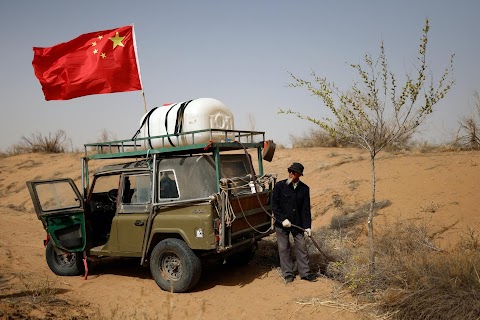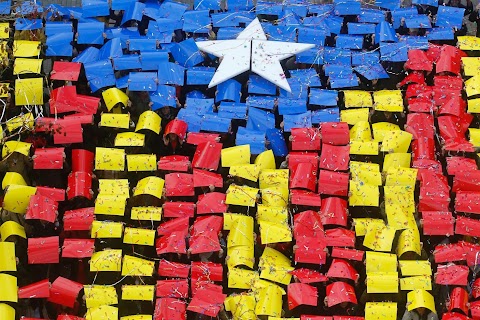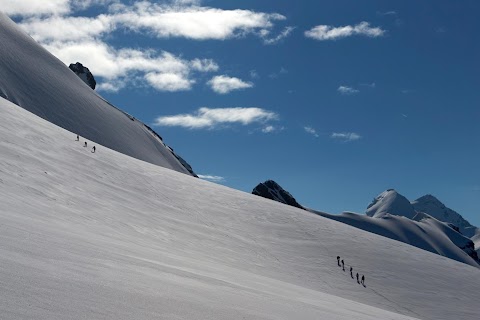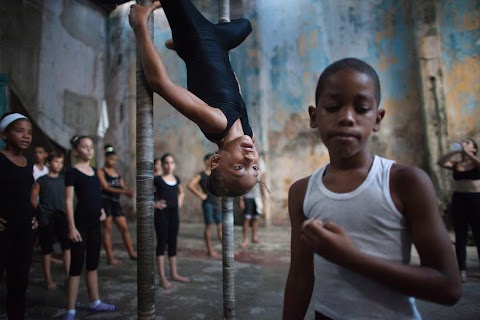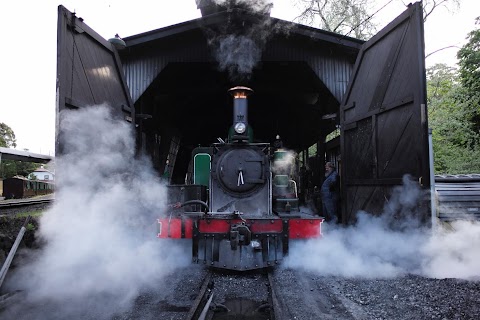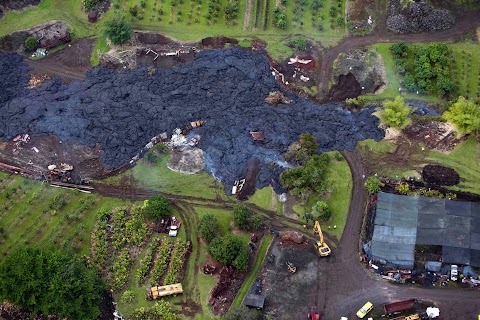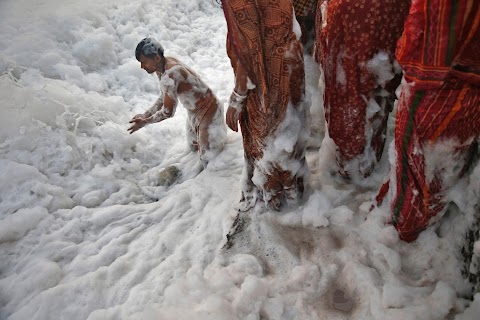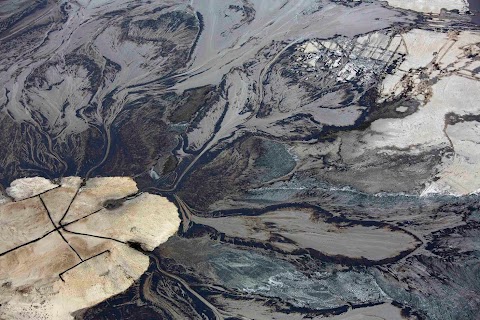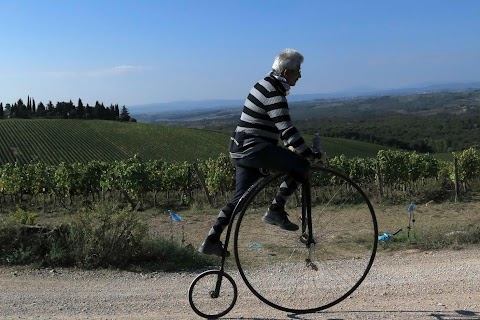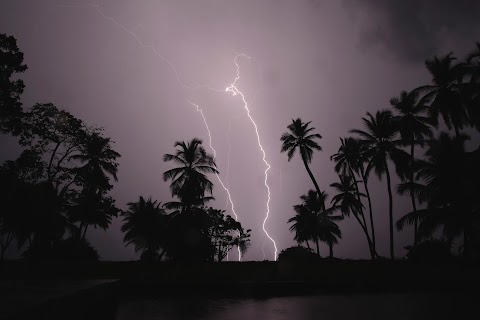
Venezuela's eternal storm
 Jorge Silva
Jorge Silva
There is a place on earth where huge storms appear almost every night, averaging 28 lightning strikes per minute for up to 10 hours at a time.
Known as the Catatumbo Lightning, this storm rises over the swampy northwest of Venezuela, where the Catatumbo River meets Lake Maracaibo.

Thanks to the frequency and brightness of the lightning, visible from miles away, the storm was used as a guide by colonial sailors, earning the nickname of “Maracaibo Beacon.”
This year it was approved for inclusion in the 2015 Guinness Book of World Records - dethroning the Congolese town of Kifuka - as the place with the most lightning bolts per square kilometre each year: 250.
"We're working on trying to get the world to know more about Venezuela and its potential as a tourism destination," said 51-year-old entomologist Alan Highton.

Despite its incredible natural beauties that inspired films like Avatar and Up, Venezuela received just 1.2 million tourists last year, when neighbouring Colombia welcomed almost 4 million.
The nearby villages of houses on stilts, Ologa and Congo Mirador, barely receive any tourists.

Though its exact origins are still fuzzy, scientists think the Catatumbo, named for a river that runs into the lake, is normal lightning that just happens to occur far more frequently than anywhere else, due to local topography and wind patterns.
Lake Maracaibo basin is surrounded by mountains that trap warm trade winds blowing in from the Caribbean Sea.

These warm winds crash into cool air spilling down from the Andes in west Venezuela, forcing them up until they condense into thunderclouds creating an average 28 lightning strikes per minute across a wide area - an energy burst that could power all the lightbulbs in Latin America.
Slideshow

A woman named Alida poses at the window of her stilt house.

A girls plays with a rope.

Children play football.

Domingo Rios, an evangelic priest who travels the the village near Maracaibo Lake poses for a portrait.

A family travel in a boat on Lake Maracaibo between houses on stilts.

Fishermen arrive at their house in a boat.

A woman named Alida swims outside her house.

Clothes hang to dry outside a stilt house.

A fisherman looks at his catch.

A woman stands next to fish left on the dock of her stilt house.

A boy holds a fish on a leaf.

A fisherman takes a shower outside his stilt house.

Children row a boat among stilt houses.
"It was like a festival of stroboscopic fireworks."
In this small fishing village of Ologa lies a square kilometre that is struck by more lightning than anywhere else on the planet almost every other night of the year.
Nataly, my travel guide, grew up with it. She knows lightning very well. As she told me, some of the people living here have a very special relationship with the phenomenon.
Her father, Alan Highton, an entomologist, has been a guide of this remote area for 25 years, ever since he left his native Barbados to follow a woman he had met. Funnily enough, it was the love of a woman that brought him here, but when he saw the Catatumbo Lightning for himself he fell in love all over again.
Nataly was thrilled we were spending the night of October 23 in the Catatumbo area. She was certain that we would see "good lightning."
When I asked her why, she told me the date marked the 10th anniversary of her two-year-old daughter Kelly losing her battle against leukaemia, and the lightning was a special way the two of them celebrated and communicated.
I silently joined her emotional celebration.
"To see the lightning we'll need a storm. We'll need massive clouds but sometimes the lightning is hidden behind them," Nataly tells me.
The first few hours of the first night were completely calm.
The lightning strikes almost every other night of the year, but after a long wait I went to my hammock to sleep, thinking that this would be one of the nights when it doesn't.
But at 2 am it woke us up with a roar, and would not cease until dawn. It was like a festival of stroboscopic fireworks. It arrived without rain - an electric storm that illuminated the clouds with different colours.
The lightning would appear vertically, horizontally, branching out, like a river in the giant screen of the sky. It was a visual symphony.
To photograph something so fast, you have to do it very slowly, using shots of 1, 3 and up to 5 minutes - it's that bright and fleeting in the middle of absolute darkness. Photographers will understand: ISO 100, f22. It is that luminous and bright.
I went to sleep at dawn, and as soon as I closed my eyes I would see the strobe and the powerful flash of the lightning again.
The second night was different. Unlike the previous one, which felt like we were watching a show on a giant screen, this time it was very close. It felt like the storm was directly above us.
We were covered under the roof of the pier, but it was almost impossible to avoid getting wet. The rain seemed to come down vertically on us, and on the cameras.
The perfect silhouette of the lightning would appear from time to time in the sky, leaving us momentarily blind.
During the day, I got to see the daily life of the fishermen and their families - lives of hard work and struggle. Earning a living as a fisherman in the oil-rich Lake of Maracaibo isn’t easy.
The lightning is so familiar for the fishermen, that some of them say they don't even notice it anymore. Obviously, no one stays awake waiting for it to appear. I got the impression that they believe that nights are like this around the world.
On my last night, the lightning was more constant and it lasted for many more hours than previously. It brought us columns of lightning strikes that would descend from a black cloud in the horizon.
Nataly was excited and moved, and so was I. Her wish of having ‘a beautiful lightning’ on her sad anniversary had come true.
Video
Catatumbo Lightning illuminates the sky in the dark.

